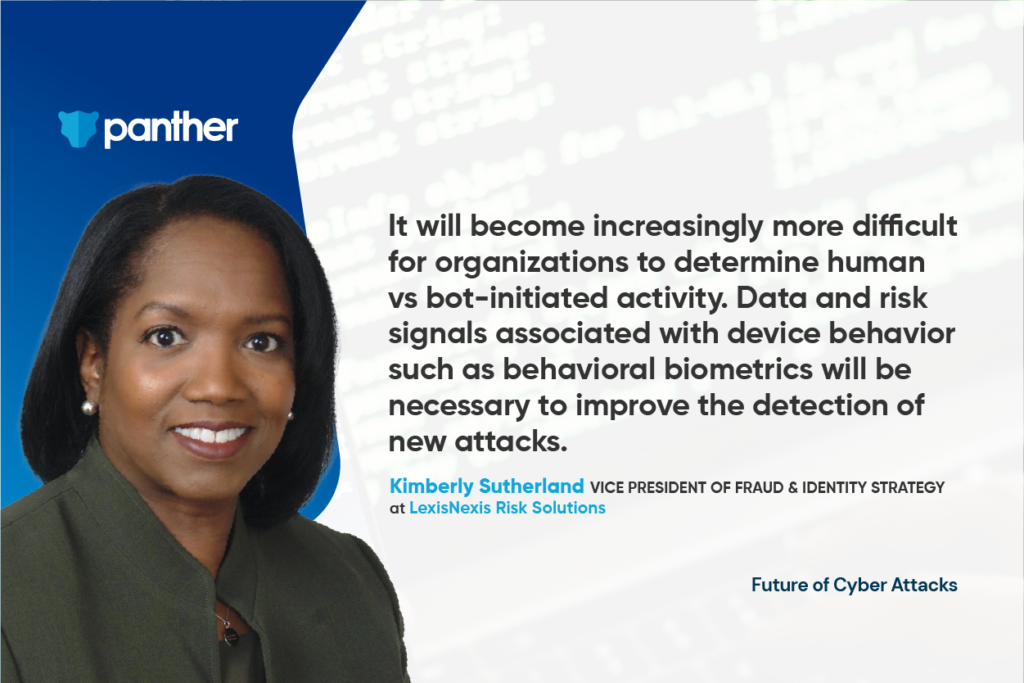This article is part of Panther’s new Future of Cyber Attacks Series which features interviews with cyber security experts, thought leaders, and practitioners with a goal of better understanding what organizations can do to prepare themselves for the future of cyber attacks.
The following is an interview we recently had with Kimberly Sutherland, VP of Fraud and Identity Strategy, LexisNexis Risk Solutions.

In comparison to last year, the LexisNexis Risk Solution’s Digital Identity Network has seen growth in automated bot attacks in every region globally. These attack volumes are based on the bot traffic seen by organizations within our network and these bot attacks use extensive attack typologies and attempt to trick or overwhelm business fraud defenses. Organizations should expect to see a continued evolution of bot attack typologies, ranging from short, sharp high velocity attacks that are conducted over a series of days to stealth attacks that may build up over a series of months.
Often the role of and impact to the consumer is less emphasized following a security breach. Organizations seem to focus on which data elements may have been compromised and whether the points of exploit have been remediated. While numerous studies have shown that security breaches erode consumers’ trust, they rarely change consumer behavior. Despite being impacted by a security breach or cyber incident, consumers rarely change their passwords or authentication processes to lessen the risk of account takeover fraud. This is an important lesson for organizations to ensure that they do not place too much emphasis on consumer behavioral changes, but proactively enforce risk-based authentication in the highest risk consumer channels to balance the customer experience with the appropriate level of security.
We will continue to see short high velocity attacks as well as stealth attacks in the future where fraudsters use the same device to target multiple organizations via several different access methods. We also expect to see an increase in cross-organizational, cross-industry and cross-regional attack patterns. Organizations should prepare for recalibration of what they consider to be high-risk activity, as those individuals and organizations committing cyber attacks expand their attack methods to avoid detection.
Organizations should be sure to pay attention to cyber attacks of all sizes, as small attacks can have seismic impacts. It will become increasingly more difficult for organizations to determine human vs bot initiated activity, so data and risk signals associated with device behavior such as behavioral biometrics will be necessary to improve the detection of new attacks. Finally, we continue to say that it takes a network to fight a network – these attacks will occur across both micro and macro fraud networks; organizations should not limit themselves to their own data or intel and look for opportunities to share intelligence related to confirmed fraud events and cyber attacks so that an entity that is marked as high-risk or fraudulent by one organization, can be reviewed by subsequent organizations before further transactions are processed.
